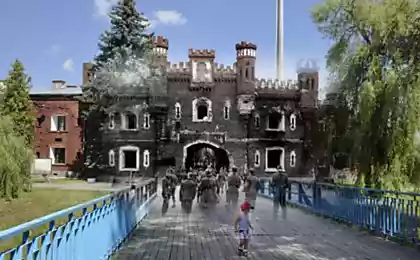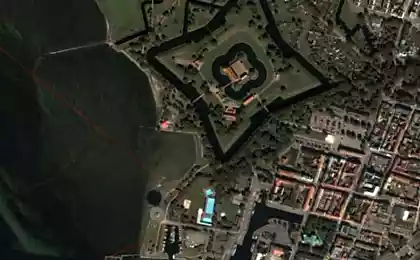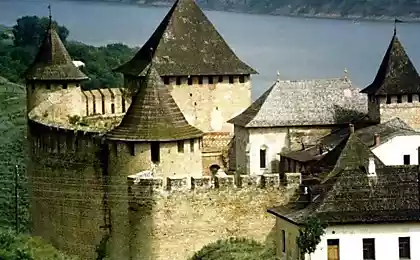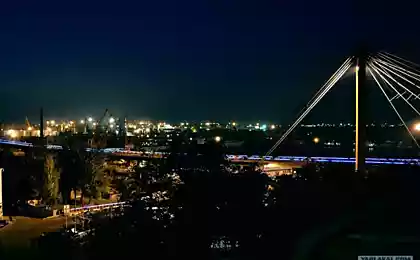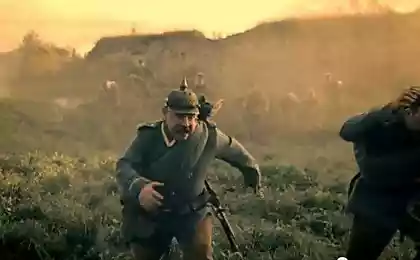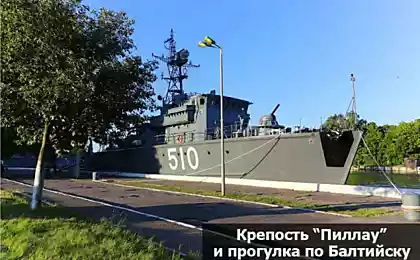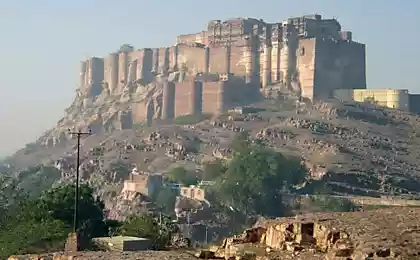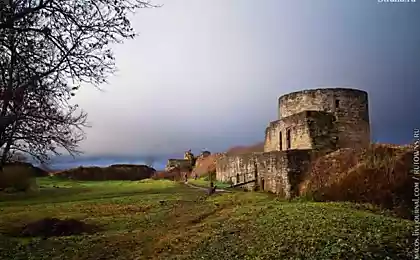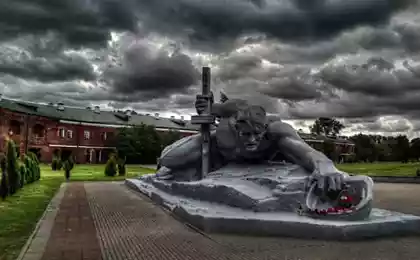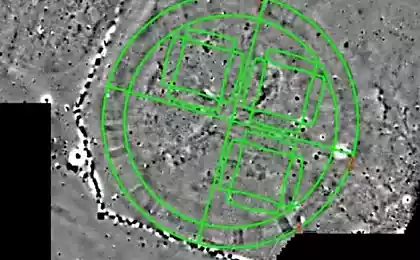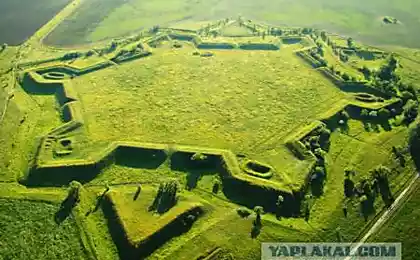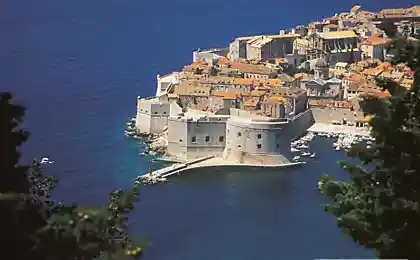954
Kamenetz-Podolsk fortress
From now on, all further my themes relating to Ukraine will imenovatsya- "Ukraine. Our common home ". I think should get a good and interesting project. After all, we have a lot of interesting, unique, and just beautiful places to visit, and then show you all.
For example I am very interested in Siberia, but I almost did not know about it. It is possible that somewhere in the Omsk, Novosibirsk, Barnaul, there is a man of Ukraine's interests. And if at least one person, no matter what the geographical point of it is, it will be interesting, then it will all be for good reason. Under this common name, I will bring all that is connected with Ukraine. First of all, it is Nature-History-People. I wish that this project has incorporated all that relates to my homeland.
I'll start with Kamenetz-Podolsk fortress. Let it be symbolic. What would this project was strong as the walls of the castle.
7 photo
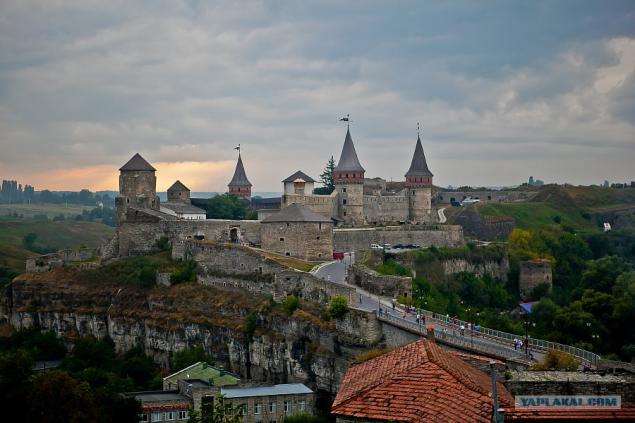
According to one theory, Polish historians in the beginning of the XIX century, supported by architects-restorers Plamenitskoy Eugenia and her daughter, the beginning of the city-fortress reaches the beginning of the I millennium BC and is associated with the Daco-Roman wars. At the beginning of II century BC Dacia has won the Roman emperor Trajan, turning it into a province of their empire. At the same time, the Romans controlled and adjacent to the Dacia territory of Transnistria. Kamenetz hypothesis identifies with one of the Dacian cities - Klepidavoy. To her quite skeptical historians contemporaries. Even discovered in the last decade on the territory of Old Castle remains of the ancient defense system of the city, which allegedly date back to the I century AD, did not convince the supporters of the "official" version of the base Kamenetz Koriatovichey princes in the XIV century.
Are Kamenetz was formerly Klepidavoy probably forever remain a mystery. But given the location of the modern Kamenetz on a rocky island, which has a natural protection from all sides, a settlement at this place simply could not exist. Especially if the skirts at the time was inhabited by people (this recalls the Greek Claudius Ptolemy). But whether fortification - that is another question.
So, if you believe the hypothesis Plamenitskoy, strengthen the territory of the Old Fortress appeared in I century BC and the appearance of the first stone fortifications - the beginning of the II century, that is, during the wars of Trajan. The defensive system consisted of two levels: internal and external, and defensive towers could resemble towers Dacian and Roman fortresses.
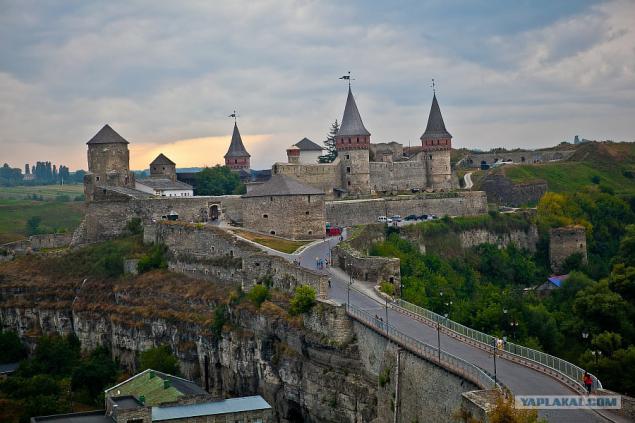
Another hypothesis refers to the first mention of Kamenetz in 1062, when Prince Fedor after the destruction of the Armenian capital Ani has invited Armenians in Kiev, Lviv and Kamenets. It was on this date relied power when celebrating the 1000th anniversary of the city in 1962. But the historian Jaroslav Dashkevich later established that the document allegedly granting privileges to the Armenians is a forgery, forged by the Armenians in the XVIII century.
The most probable is the third, the "official" version of the founding of Kamenetz in the XIV century Lithuanian princes Koriatovichey. But today, almost no one doubts that in the times of Kievan Rus fortification in Kamenetz existed. Proof of this is the cultural layer thickness of half a meter in the oldest preserved tower fortress - Day dated XII - XIII centuries. Probably at the end of the XII century the remains of the ancient Roman towers (if they really existed) were fortified by ramparts and moats, and enhanced by a stone wall with battlements, merlons and slotted loopholes. Detinets where the residence of nobleman or prince, to the northeast of Cape was further reinforced by a moat.
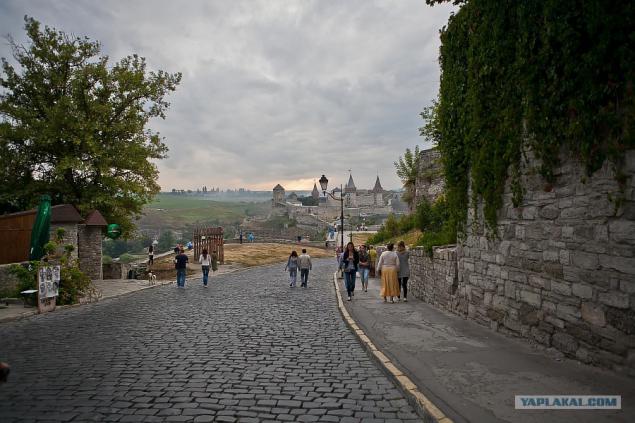
After the capture of the Ukrainian lands, including those downgraded (previously referred to as skirts) Golden Horde, the new owners were ordered to destroy strongholds. Although we have already mentioned Olga Plamenitskaya suggests that the Tatar-Mongols contrary restored castle and a bridge between the fortress and the city with the help of Armenian colonists, who appeared in the city just as the Mongol times. In the last third of the XIII century it was to lower the Temnik in possession of the Golden Horde Nogay.
In the 40 years of the XIV century downgraded (from the time it begins to apply a new name - skirts) falls under the authority of the Lithuanian princes Koriatovichey. In 1362, the Grand Duke of Lithuania Algirdas Gediminas with the help of brothers Koriatovichey defeated the Tatars in the Battle of Blue Waters, and then skirts came under the rule of Lithuania. Edit Podillya was his nephew Koriatovichi: Yuri, Alexander, Boris, Constantine and Theodore. The castle became their residence. They develop the castle fortifications, increase the thickness and height of walls, reinforce the tower, lay the new part of the fortress. On its territory there was the Orthodox Church of the Intercession, and castle building housed gornizona prince and lived with the warden. At the same time, Koriatovichi erecting castles Smotrich, Rock, Chervonogrude, Bakota, Vinnitsa, Medzhibozh.
First Koriatovichi were allies of the Lithuanian Grand Duke of Westminster, but after the signing of the 1366 agreement between the Kingdom of Poland and the Great Lithuanian prince's brothers are taking the side of the Polish king Casimir III. February 7, 1374, Yuri and Alexander Koriatovichi give the city the Magdeburg Law, which was then repeatedly affirmed the Polish kings.

Brothers ruled alternately Kamenetz. Once in 1374 Yuri became the ruler of the Moldavian principality, ruled by Alexander the city together with Boris. After the death of Alexander in 1378 became co-regent Boris Constantine. After the death of Constantine in 1391 Kamenetz ruled last of the brothers - Fedor.
In 1393 Vytautas captures skirts and Theodore runs away to Hungary, leaving his castle governor Nestaka. In the autumn of the same year, the first time the fortress fell to the enemy: the Lithuanians led by Vytautas stormed the castle. Because of the discord within the garrison protection is not provided much resistance.
The following year, the Grand Duke Vytautas receives from the Polish King Vladislav II Jagiello letter to own the castle and surrounding area. By order of the king in the castle appear Kamenetz guns and six barrels of gunpowder. Vytautas the long rule in Kamenetz. King Jagiello, worried about the rapid spread of power in the territory of Vytautas skirts, both Western and Eastern, forcing him to cede Kamenetz and Western skirts and give it the property of the king. Vytautas remained only Eastern skirts. In the same year begins forty years of Polish-Lithuanian conflict in which the enemy of the Polish king Jagiello favor of his younger brother Svidrigaylo.
In 1395 Jagiello provides Kamenetz and Western skirts "for special merits" Cracow governor Spitko Melshtina with "an everlasting possession and irrevocable." Spitko began construction of four powerful castle towers: Tenchinskoy, Kovpaka Lyantskoronskoy and Rozhanka, but did not complete the work. After his death in a battle with the Tartars in 1399, King buys Western skirts his widow Elizabeth. In 1400 Jagiello gave Kamenetz his younger brother Prince Svidrigailov. But not for long, because he filed a claim to the Lithuanian throne, he turned for help to the crusaders of the Teutonic Order and concluded an alliance with them, for which he left without skirts in 1404, when it once again became the property of the king.

In 1411 Jagiello had to give Kamenetz Vytautas in accordance with the agreement concluded between them. Vytautas continued to develop in the direction of the castle, the construction of a corner tower, which later became known as the Papal States, and the Black Tower, which existed right of the modern entrance to the castle and was destroyed during the Turkish siege of the city in 1672. After the death of Vytautas in 1430, leaders of the Podolsky gentry Gritsko Kirdeevich, brothers Michael, Theodoric and Muzhilo Buchach take control Kamenetz and other cities of Western skirts. Svidrigaylo Kamenetz tries to return, but to no avail. Forty years of Polish-Lithuanian War ends in 1434, and the city, along with the strength of the final transition to the Poles. In the same year Kamenetz Podolsky became the capital of the province and get the coat of arms - the sun on a white field. And for two years before Jagiello confirmed the city granted the Magdeburg Law.
In 1463 Kamenetz gets the status of a royal town. Besides East "kresovoy" the capital of Poland, the city was a kind of redoubt of Christianity in the East, but because of its fortifications attached importance as the leadership of the Commonwealth, and Rome. Even in 1451, Pope Nicholas V Podolsk nobility freed from a pilgrimage to the Holy See, provided the direction of half of the funds earmarked for the pilgrimage, to strengthen the fortifications Kamyanets.
In the same 1463 the Polish king Casimir Yagelonchik by the decision of the Diet Pyotrkivskogo buys the then city mayor Fyodor Buchach. At the same Seimas it was decided to start work on strengthening the fortifications: partly by the royal treasury, in part - with funding from Podolsk gentry. To handle the concept of the city fortification king sends Kamenetz best Polish military specialists with the Cracow castellan Jan Tenczyn, Sandomierz governor Dzerzhislava with Ritvin and Lviv Governor Andrew Odrovonzha.
At the end of the XV century was built by Polish and water tower and reconstructed Tenchinskuyu and Lyantskoronskuyu. By 1494 is the first known depiction of the castle. From it we learn that the entrance to the fortress from the city defended the city gates, on the north-west, that is, by the enemy - Entirely gates. From the Polish Filvarok along the cliffs were izbischa and stone walls with two towers. In contrast modern Karvasar fortress defended rocks and in the middle of southern defense line was a small guard tower. The same tower was from the west, between it and the gates were Hotinskaya clandestine excavation trenches. In the courtyard there is a church, the commandant's house, rooms for guards and servants, weapons and ammunition stores, a bakery, a brewery, stables. Garrison has 11 large and 4 small cannon 1 tarasnitsu, several mortars, about 100 bows (many of them in poor condition), 32 gakovnitsy, 15 broken guns. Food supplies in the castle did not exist, but the soldiers did not receive their salaries on time due.
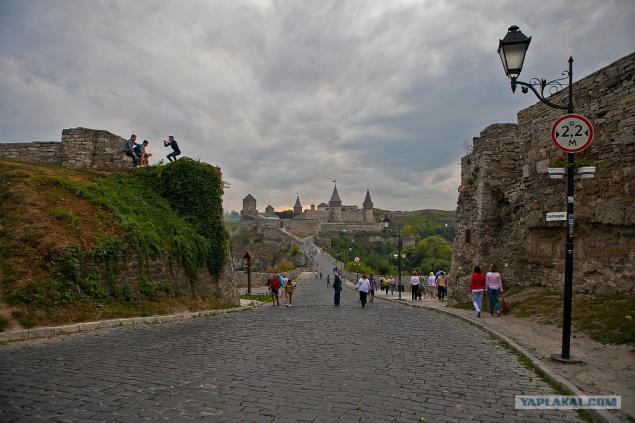
The critical state of the fortifications described auditor was impressed by both the king and the pope. At the beginning of the XIV century, Pope Julius II directs the tithe for the restoration of the four towers: Rozhanka, Kovpaka White (Polish) and Papal. In honor of this for some time, all four towers called "papal».
My Photos, text part, my part of Andrei Bondarenko, for which he kowtow and great thanks.
Enjoy watching.

Source:
For example I am very interested in Siberia, but I almost did not know about it. It is possible that somewhere in the Omsk, Novosibirsk, Barnaul, there is a man of Ukraine's interests. And if at least one person, no matter what the geographical point of it is, it will be interesting, then it will all be for good reason. Under this common name, I will bring all that is connected with Ukraine. First of all, it is Nature-History-People. I wish that this project has incorporated all that relates to my homeland.
I'll start with Kamenetz-Podolsk fortress. Let it be symbolic. What would this project was strong as the walls of the castle.
7 photo

According to one theory, Polish historians in the beginning of the XIX century, supported by architects-restorers Plamenitskoy Eugenia and her daughter, the beginning of the city-fortress reaches the beginning of the I millennium BC and is associated with the Daco-Roman wars. At the beginning of II century BC Dacia has won the Roman emperor Trajan, turning it into a province of their empire. At the same time, the Romans controlled and adjacent to the Dacia territory of Transnistria. Kamenetz hypothesis identifies with one of the Dacian cities - Klepidavoy. To her quite skeptical historians contemporaries. Even discovered in the last decade on the territory of Old Castle remains of the ancient defense system of the city, which allegedly date back to the I century AD, did not convince the supporters of the "official" version of the base Kamenetz Koriatovichey princes in the XIV century.
Are Kamenetz was formerly Klepidavoy probably forever remain a mystery. But given the location of the modern Kamenetz on a rocky island, which has a natural protection from all sides, a settlement at this place simply could not exist. Especially if the skirts at the time was inhabited by people (this recalls the Greek Claudius Ptolemy). But whether fortification - that is another question.
So, if you believe the hypothesis Plamenitskoy, strengthen the territory of the Old Fortress appeared in I century BC and the appearance of the first stone fortifications - the beginning of the II century, that is, during the wars of Trajan. The defensive system consisted of two levels: internal and external, and defensive towers could resemble towers Dacian and Roman fortresses.

Another hypothesis refers to the first mention of Kamenetz in 1062, when Prince Fedor after the destruction of the Armenian capital Ani has invited Armenians in Kiev, Lviv and Kamenets. It was on this date relied power when celebrating the 1000th anniversary of the city in 1962. But the historian Jaroslav Dashkevich later established that the document allegedly granting privileges to the Armenians is a forgery, forged by the Armenians in the XVIII century.
The most probable is the third, the "official" version of the founding of Kamenetz in the XIV century Lithuanian princes Koriatovichey. But today, almost no one doubts that in the times of Kievan Rus fortification in Kamenetz existed. Proof of this is the cultural layer thickness of half a meter in the oldest preserved tower fortress - Day dated XII - XIII centuries. Probably at the end of the XII century the remains of the ancient Roman towers (if they really existed) were fortified by ramparts and moats, and enhanced by a stone wall with battlements, merlons and slotted loopholes. Detinets where the residence of nobleman or prince, to the northeast of Cape was further reinforced by a moat.

After the capture of the Ukrainian lands, including those downgraded (previously referred to as skirts) Golden Horde, the new owners were ordered to destroy strongholds. Although we have already mentioned Olga Plamenitskaya suggests that the Tatar-Mongols contrary restored castle and a bridge between the fortress and the city with the help of Armenian colonists, who appeared in the city just as the Mongol times. In the last third of the XIII century it was to lower the Temnik in possession of the Golden Horde Nogay.
In the 40 years of the XIV century downgraded (from the time it begins to apply a new name - skirts) falls under the authority of the Lithuanian princes Koriatovichey. In 1362, the Grand Duke of Lithuania Algirdas Gediminas with the help of brothers Koriatovichey defeated the Tatars in the Battle of Blue Waters, and then skirts came under the rule of Lithuania. Edit Podillya was his nephew Koriatovichi: Yuri, Alexander, Boris, Constantine and Theodore. The castle became their residence. They develop the castle fortifications, increase the thickness and height of walls, reinforce the tower, lay the new part of the fortress. On its territory there was the Orthodox Church of the Intercession, and castle building housed gornizona prince and lived with the warden. At the same time, Koriatovichi erecting castles Smotrich, Rock, Chervonogrude, Bakota, Vinnitsa, Medzhibozh.
First Koriatovichi were allies of the Lithuanian Grand Duke of Westminster, but after the signing of the 1366 agreement between the Kingdom of Poland and the Great Lithuanian prince's brothers are taking the side of the Polish king Casimir III. February 7, 1374, Yuri and Alexander Koriatovichi give the city the Magdeburg Law, which was then repeatedly affirmed the Polish kings.

Brothers ruled alternately Kamenetz. Once in 1374 Yuri became the ruler of the Moldavian principality, ruled by Alexander the city together with Boris. After the death of Alexander in 1378 became co-regent Boris Constantine. After the death of Constantine in 1391 Kamenetz ruled last of the brothers - Fedor.
In 1393 Vytautas captures skirts and Theodore runs away to Hungary, leaving his castle governor Nestaka. In the autumn of the same year, the first time the fortress fell to the enemy: the Lithuanians led by Vytautas stormed the castle. Because of the discord within the garrison protection is not provided much resistance.
The following year, the Grand Duke Vytautas receives from the Polish King Vladislav II Jagiello letter to own the castle and surrounding area. By order of the king in the castle appear Kamenetz guns and six barrels of gunpowder. Vytautas the long rule in Kamenetz. King Jagiello, worried about the rapid spread of power in the territory of Vytautas skirts, both Western and Eastern, forcing him to cede Kamenetz and Western skirts and give it the property of the king. Vytautas remained only Eastern skirts. In the same year begins forty years of Polish-Lithuanian conflict in which the enemy of the Polish king Jagiello favor of his younger brother Svidrigaylo.
In 1395 Jagiello provides Kamenetz and Western skirts "for special merits" Cracow governor Spitko Melshtina with "an everlasting possession and irrevocable." Spitko began construction of four powerful castle towers: Tenchinskoy, Kovpaka Lyantskoronskoy and Rozhanka, but did not complete the work. After his death in a battle with the Tartars in 1399, King buys Western skirts his widow Elizabeth. In 1400 Jagiello gave Kamenetz his younger brother Prince Svidrigailov. But not for long, because he filed a claim to the Lithuanian throne, he turned for help to the crusaders of the Teutonic Order and concluded an alliance with them, for which he left without skirts in 1404, when it once again became the property of the king.

In 1411 Jagiello had to give Kamenetz Vytautas in accordance with the agreement concluded between them. Vytautas continued to develop in the direction of the castle, the construction of a corner tower, which later became known as the Papal States, and the Black Tower, which existed right of the modern entrance to the castle and was destroyed during the Turkish siege of the city in 1672. After the death of Vytautas in 1430, leaders of the Podolsky gentry Gritsko Kirdeevich, brothers Michael, Theodoric and Muzhilo Buchach take control Kamenetz and other cities of Western skirts. Svidrigaylo Kamenetz tries to return, but to no avail. Forty years of Polish-Lithuanian War ends in 1434, and the city, along with the strength of the final transition to the Poles. In the same year Kamenetz Podolsky became the capital of the province and get the coat of arms - the sun on a white field. And for two years before Jagiello confirmed the city granted the Magdeburg Law.
In 1463 Kamenetz gets the status of a royal town. Besides East "kresovoy" the capital of Poland, the city was a kind of redoubt of Christianity in the East, but because of its fortifications attached importance as the leadership of the Commonwealth, and Rome. Even in 1451, Pope Nicholas V Podolsk nobility freed from a pilgrimage to the Holy See, provided the direction of half of the funds earmarked for the pilgrimage, to strengthen the fortifications Kamyanets.
In the same 1463 the Polish king Casimir Yagelonchik by the decision of the Diet Pyotrkivskogo buys the then city mayor Fyodor Buchach. At the same Seimas it was decided to start work on strengthening the fortifications: partly by the royal treasury, in part - with funding from Podolsk gentry. To handle the concept of the city fortification king sends Kamenetz best Polish military specialists with the Cracow castellan Jan Tenczyn, Sandomierz governor Dzerzhislava with Ritvin and Lviv Governor Andrew Odrovonzha.
At the end of the XV century was built by Polish and water tower and reconstructed Tenchinskuyu and Lyantskoronskuyu. By 1494 is the first known depiction of the castle. From it we learn that the entrance to the fortress from the city defended the city gates, on the north-west, that is, by the enemy - Entirely gates. From the Polish Filvarok along the cliffs were izbischa and stone walls with two towers. In contrast modern Karvasar fortress defended rocks and in the middle of southern defense line was a small guard tower. The same tower was from the west, between it and the gates were Hotinskaya clandestine excavation trenches. In the courtyard there is a church, the commandant's house, rooms for guards and servants, weapons and ammunition stores, a bakery, a brewery, stables. Garrison has 11 large and 4 small cannon 1 tarasnitsu, several mortars, about 100 bows (many of them in poor condition), 32 gakovnitsy, 15 broken guns. Food supplies in the castle did not exist, but the soldiers did not receive their salaries on time due.

The critical state of the fortifications described auditor was impressed by both the king and the pope. At the beginning of the XIV century, Pope Julius II directs the tithe for the restoration of the four towers: Rozhanka, Kovpaka White (Polish) and Papal. In honor of this for some time, all four towers called "papal».
My Photos, text part, my part of Andrei Bondarenko, for which he kowtow and great thanks.
Enjoy watching.

Source:


